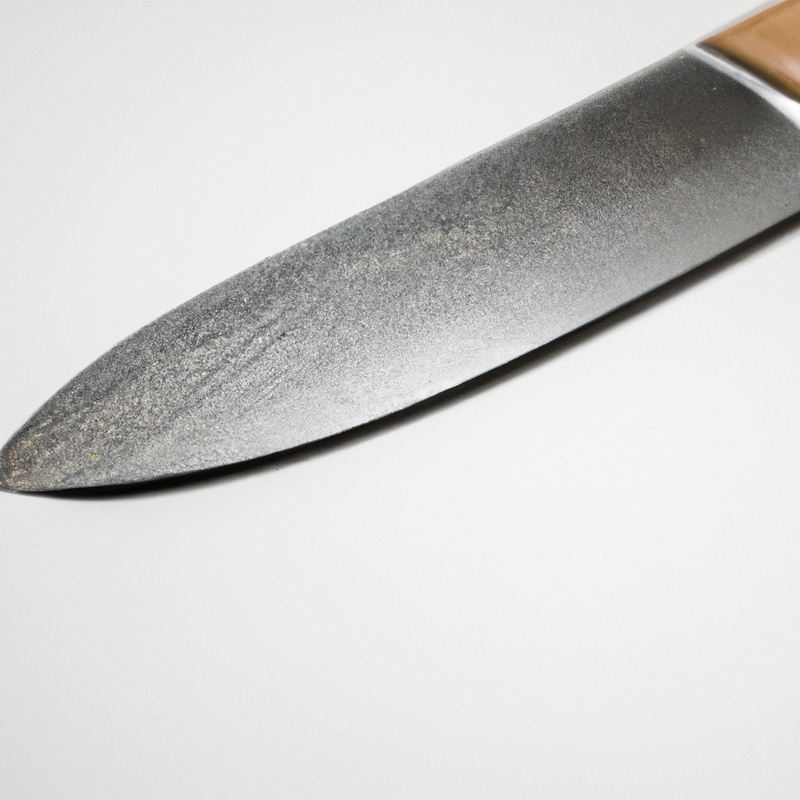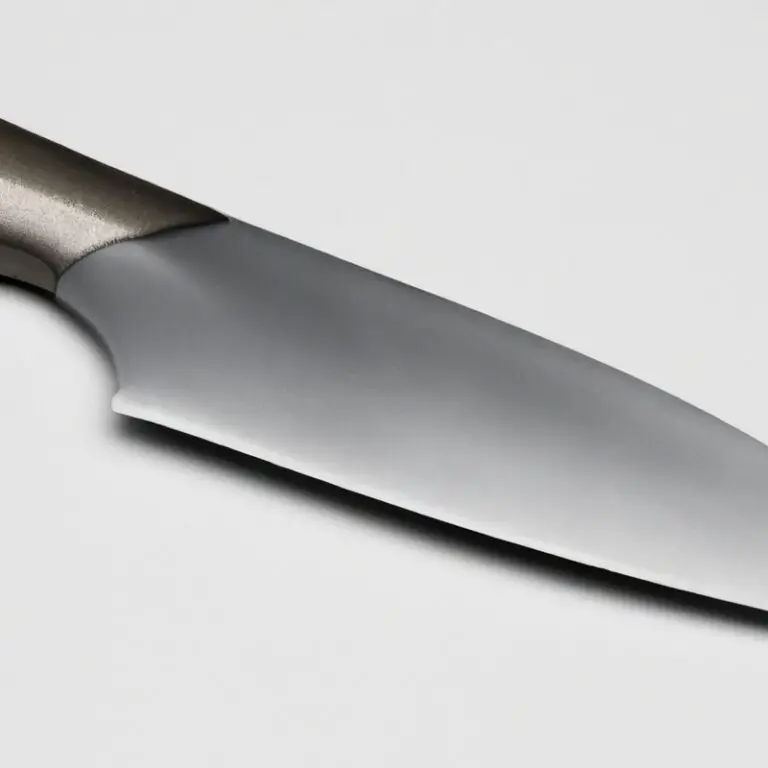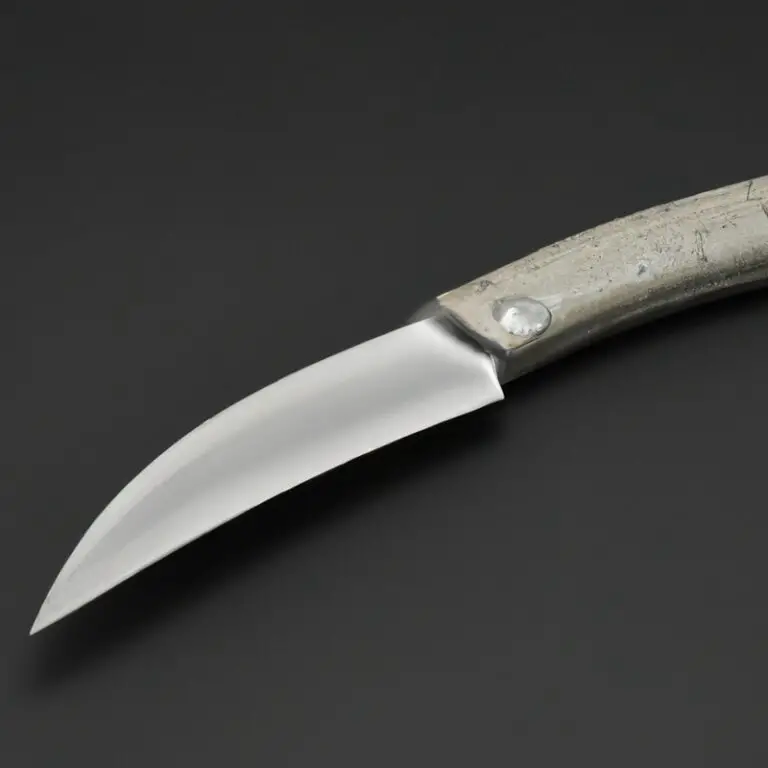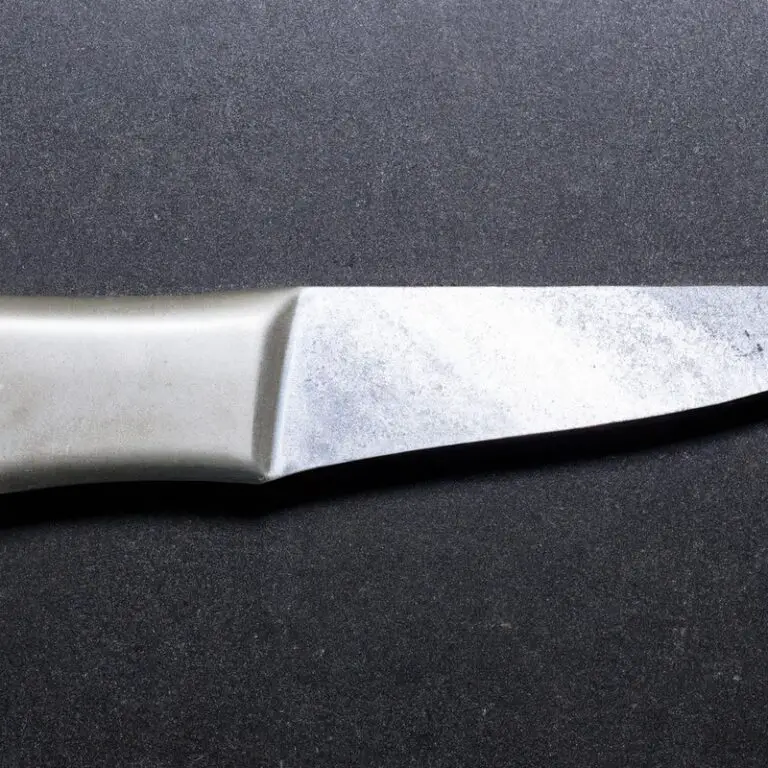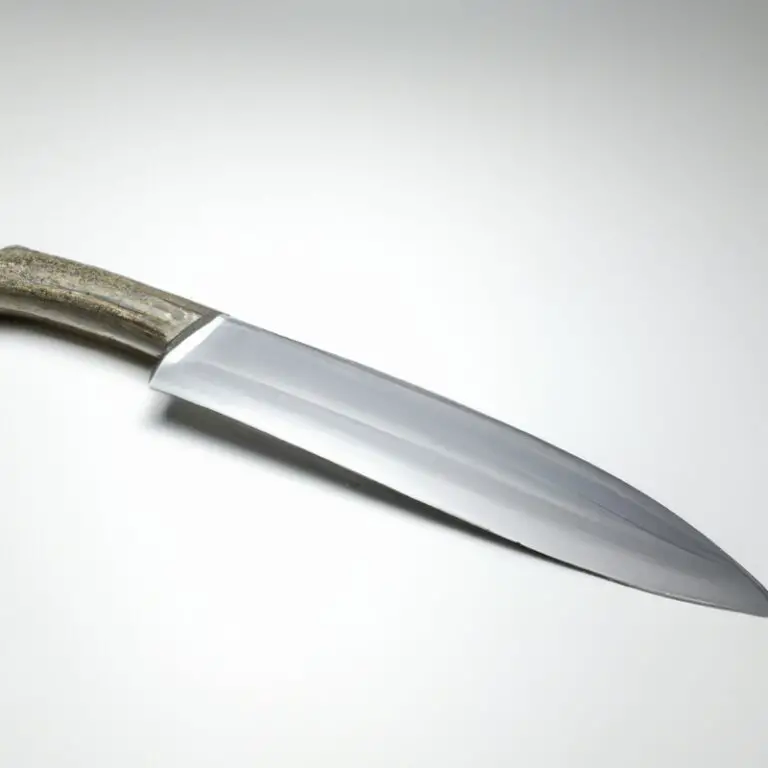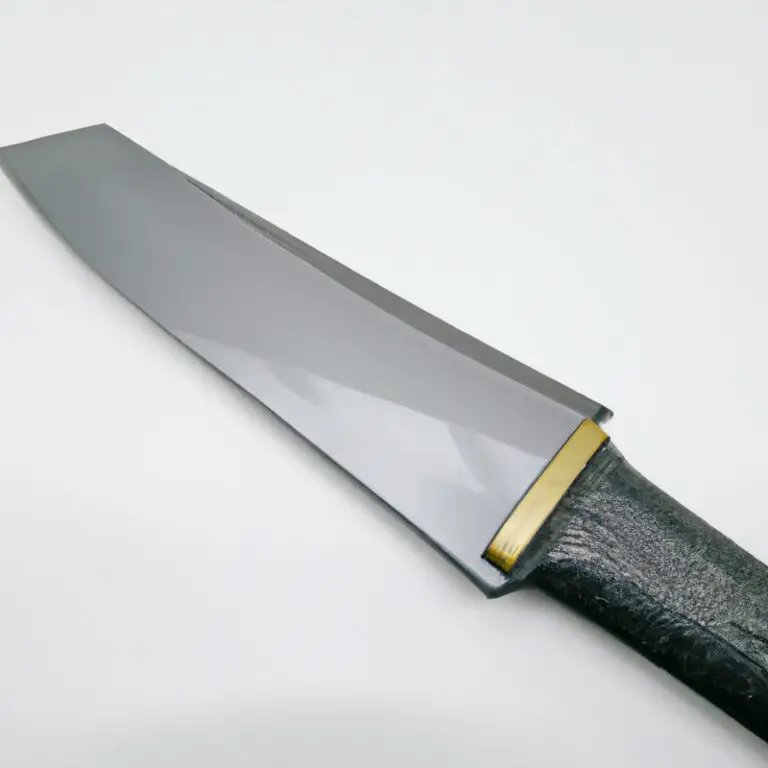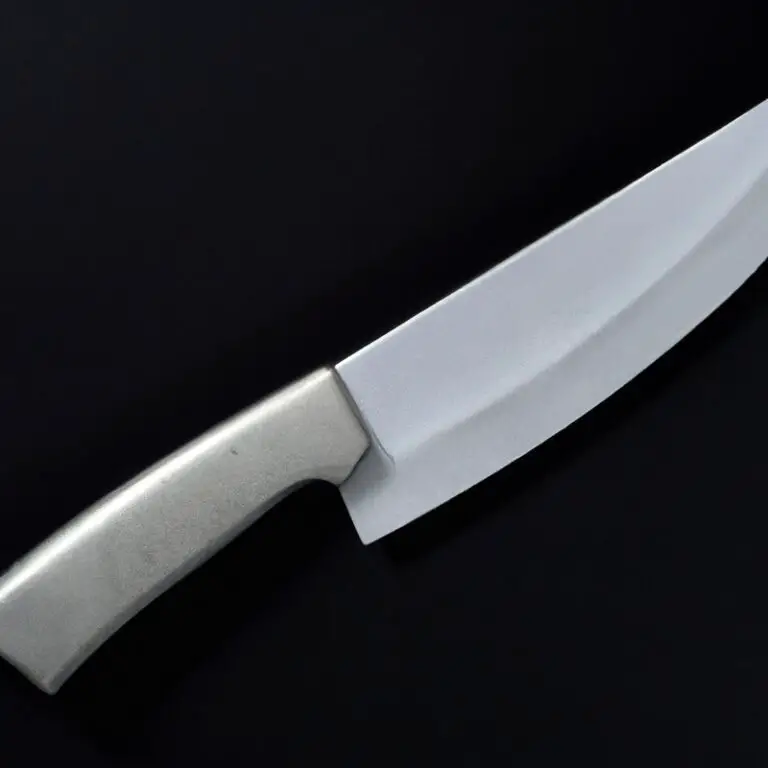How To Choose The Right Gyuto Knife For Different Ingredients? Slice Like a Pro!
Key Takeaways:
- Understand the purpose of a Gyuto knife and how it differs from other types of knives.
- Consider the size, weight, and material of the blade when selecting a Gyuto knife for specific ingredients.
- Choose a Gyuto knife with a comfortable handle and good balance for optimal control and precision.
- Proper maintenance and sharpening are crucial to prolonging the lifespan and effectiveness of your Gyuto knife.
Are you tired of using the same old kitchen knife for all your cooking needs? Look no further than the Gyuto knife, a versatile Japanese-style knife that can handle a variety of ingredients with ease.
But with so many options available, how do you choose the right one for your needs?
In this article, I’ll walk you through the key factors to consider, from blade length and weight to handle design and material. Whether you’re a professional chef or a home cook, you’ll learn everything you need to know to find the perfect Gyuto knife for your culinary adventures.
| Ingredient Type | Blade Length | Blade Material | Handle Material | Sharpness | Flexibility | Price |
|---|---|---|---|---|---|---|
| Vegetables | 7-10 inches | High Carbon Stainless Steel | Wood or Synthetic | Very Sharp | Slightly Flexible | $50-$200 |
| Meat | 8-12 inches | High Carbon Stainless Steel or Damascus Steel | Wood or G-10 | Extremely Sharp | Less Flexible | $100-$500 |
| Fish | 9-12 inches | High Carbon Stainless Steel or Damascus Steel | Wood or G-10 | Very Sharp | Flexible | $150-$600 |
| Bread | 9-12 inches | High Carbon Stainless Steel or Carbon Stainless Steel | Wood or G-10 | Sharp | Stiff | $50-$300 |
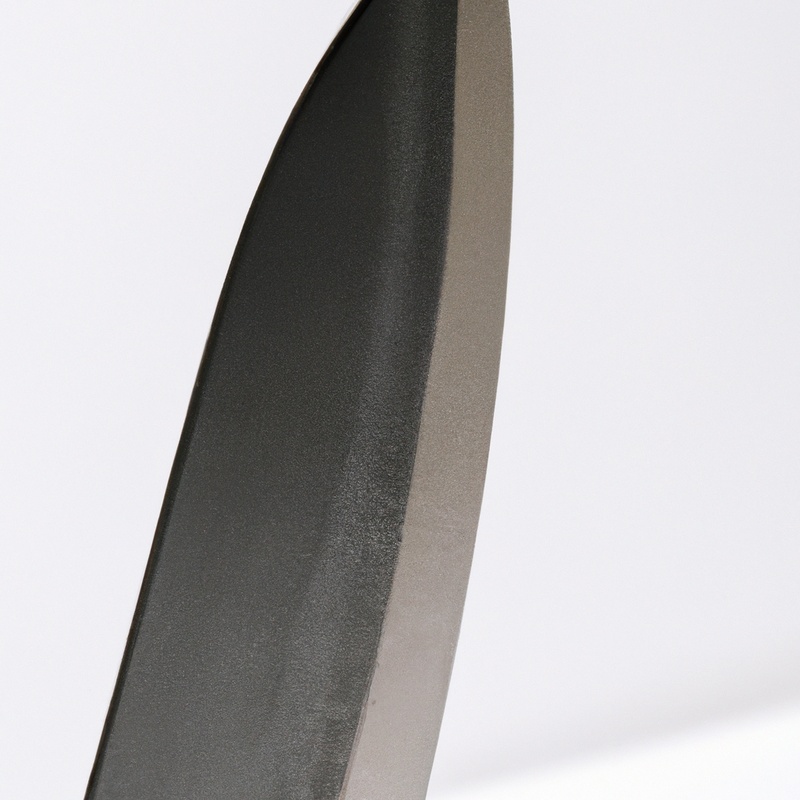
Understanding the Gyuto knife: An overview
A Gyuto knife is a traditional Japanese knife that is commonly used as an all-purpose kitchen knife. Gyuto knives typically have a thin, sharp blade that can easily cut through a variety of ingredients, including meat, vegetables, and fish.
Understanding the basic features of a Gyuto knife is crucial when selecting the right one for your needs.
Factors such as blade length, weight, material, and handle design all play a role in determining the best Gyuto knife for different cooking tasks. Additionally, proper maintenance and sharpening methods are essential to keep your Gyuto knife in top shape for optimal performance.
By choosing the right Gyuto knife and mastering essential techniques, you can elevate your kitchen skills and create delicious dishes with ease.
The importance of choosing the right knife for different ingredients
Choosing the right knife for different ingredients is essential for achieving optimal results in the kitchen. Each ingredient has its unique characteristics, which require a specific type of knife to ensure precision, efficient cutting, and safety.
Using the wrong knife can lead to uneven cuts, bruising, and even injury.
For example, a chef’s knife may be perfect for chopping vegetables, but it may not be suitable for filleting fish or carving meat. It is crucial to choose a knife that is appropriate for the task to achieve the best results and avoid damaging both the knife and the ingredient.
By selecting the proper knife for each ingredient, you can improve your culinary skills and enjoy cooking more than ever before.
How to identify the best Gyuto knife for your needs
To identify the best Gyuto knife for your needs, there are several factors to consider. Firstly, blade length and weight are crucial to ensure a balanced and comfortable grip.
Additionally, the blade’s material affects its durability, sharpness, and ease of maintenance.
A high-quality steel blade like VG-10 or SG2 is recommended for its excellent performance. Handle design and comfort are also critical, so choose a knife with a comfortable grip that fits your hand size.
Finally, personal preference plays a significant role in selecting a Gyuto knife that you will love to use.
Consider your cooking style, favorite dishes, and cutting techniques to choose a knife that best suits your needs. By keeping these factors in mind, you can identify the best Gyuto knife for your personal needs.
Blade length and weight: Factors to consider when choosing a Gyuto knife
Blade length and weight are essential factors to consider when choosing a Gyuto knife. The blade length typically ranges from 8 to 12 inches, with longer blades being better for slicing and chopping larger ingredients.
However, shorter blades offer more maneuverability and are ideal for intricate cuts.
The weight of the knife affects its balance and handling. A heavier weight provides more power and control, making it suitable for tough ingredients like meat.
On the other hand, a lighter knife is ideal for tasks that require precision and agility, such as chopping herbs and vegetables.
Ultimately, the ideal blade length and weight depend on personal preferences and the type of ingredients being prepared. It’s crucial to try out different knives to find the ones that feel comfortable and efficient in your hand.
The significance of the blade material in a Gyuto knife
The blade material is a critical consideration when choosing a Gyuto knife. It affects the knife’s durability, sharpness, and ease of maintenance.
The two most common blade materials for Gyuto knives are stainless steel and high-carbon steel.
Stainless steel blades are resistant to rust and corrosion, making them easy to maintain. They are also less prone to staining and discoloration than high-carbon steel blades.
However, stainless steel blades can be more challenging to sharpen and may not hold their edge as long as high-carbon steel blades.
High-carbon steel blades are excellent for edge retention and are easier to sharpen than stainless steel blades. They also tend to have a thinner blade, allowing for more precise cuts.
However, they require more maintenance and are more prone to rusting and staining than stainless steel blades.
Ultimately, the blade material you choose will depend on your personal preferences and needs. If you prioritize low maintenance and rust resistance, stainless steel may be the best choice for you.
If you value edge retention and are willing to put in more time for maintenance, a high-carbon steel blade may be more suitable.
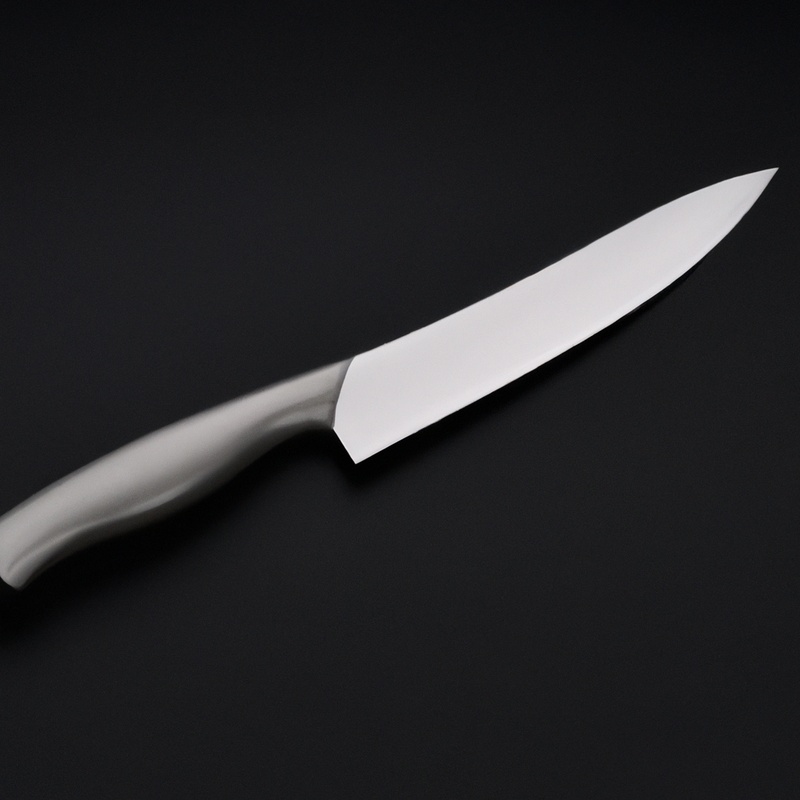
Handle design and comfort: A critical consideration when buying a Gyuto knife
Handle design and comfort are crucial when purchasing a Gyuto knife. The handle should provide a comfortable grip to enable easier, safer, and more precise cutting.
The material used to make the handle can also impact the knife’s balance and performance.
Wood, plastic, and metal are common handle materials for Gyuto knives. Wooden handles are stylish but can be slippery and require more maintenance than other materials.
Plastic handles are cost-effective, easy to maintain, and provide a good grip.
Metal handles are durable and easy to clean but can be too heavy for some users. Additionally, the handle shape and size should be comfortable for the user’s hand size and grip preference.
Some handles have ergonomic designs that reduce fatigue and prevent strains.
Other handles have textured surfaces that provide a better grip and prevent slipping. Remember, when choosing a Gyuto knife, prioritize handle design and comfort since they can affect the knife’s overall performance and your satisfaction as a user.
Sharpening and maintenance: Keeping your Gyuto knife in top shape
Keeping your Gyuto knife in top shape requires regular maintenance and sharpening. Blunt blades cause frustration, slow down work, and increase the chances of injury.
Sharpening your Gyuto knife is essential in maintaining the sharpness of the blade and prolonging its lifespan.
To maintain your Gyuto knife, it is recommended to regularly clean and dry the blade after use. Avoid using abrasive materials or harsh chemicals when cleaning, as they can damage the blade.
Instead, use a soft cloth to wipe the blade clean and dry it thoroughly with another cloth.
Sharpening your Gyuto knife should be done using a sharpening stone or honing steel. A sharpening stone helps to realign the blade and remove any dull spots, while a honing steel helps to maintain the blade’s edge.
When sharpening with a sharpening stone, use a consistent angle and pressure to the blade while moving the blade back and forth across the stone.
Finishing by honing the blade with a honing steel. Lastly, store your Gyuto knife safely.
Using a knife block or magnet strip is recommended in keeping the blade sharp and preventing any accidents.
Maintaining your Gyuto knife is essential in ensuring its longevity and maintaining its sharpness. With regular maintenance and sharpening, your Gyuto knife can continue to cut through different ingredients with ease.
The influence of personal preference on choosing a Gyuto knife
Personal preference plays a vital role in choosing the right Gyuto knife. It can depend on various factors such as the user’s hand size, grip style, and preferred weight distribution.
Some may prefer a heavier knife for chopping denser ingredients, while others may opt for a lighter option.
Additionally, the blade height and width can also impact personal preference, as it can affect the ease of use and comfort level for the user. Ultimately, the best Gyuto knife is the one that feels most comfortable and efficient in the hands of the user.
Essential knife skills and techniques for using a Gyuto knife
To master the use of a Gyuto knife, essential skills and techniques must be learned. Here are some important tips to help you use your Gyuto knife efficiently:
- Maintaining the correct grip: Hold the knife handle with a firm grip and middle and index fingers positioned on opposite sides of the blade. The thumb should be resting on the opposite side of the blade.
- Slicing technique: Make sure to keep your non-dominant hand’s fingertips tucked beneath the ingredients while your dominant hand employs a back and forth motion. Always keep your hands slightly elevated so that the blade’s tip touches the cutting board first.
- Stab technique: Some foods may require stabbing rather than slicing. In this technique, secure the food with your non-dominant hand and drive the blade down with your dominant hand.
- Rocking Technique: Gyuto knives are designed for the rocking motion. The tip of the blade cuts in a swinging motion making it perfect for precise cuts.
- Sharpening regularly: Regular sharpening is critical to retain your knife’s quality and effectiveness. Invest in a honing steel and sharpening stone to keep your Gyuto knife sharp for a long time.
By applying these essential knife skills and techniques for your Gyuto knife, you will achieve precise, clean, and effortless cuts.
Using a Gyuto knife for different culinary styles and dishes
Using a Gyuto knife in the culinary world is incredibly versatile due to its ability to perform a variety of tasks with precision and accuracy. The long blade of a Gyuto knife makes it ideal for slicing through meat, fish, vegetables, and fruits with ease, allowing for a variety of culinary styles and dishes.
For instance, the thinness and flexibility of the blade make it perfect for filleting fish, slicing through delicate herbs, and trimming meats.
Its sturdy blade can also make quick work of dense fruits and vegetables, such as butternut squash and potatoes. The Gyuto knife’s versatile design and sharpness make it an essential tool in the kitchen for preparing sushi, cutting thinly sliced meats and vegetables for stir fry, and even for carving roasts and turkeys during the holidays.
Overall, the Gyuto knife’s flexibility, precision, and ease of use make it an excellent choice for chefs of all skill levels looking for a versatile and reliable tool in their kitchen arsenal.
Final Verdict
Choosing the right Gyuto knife for different ingredients is crucial for achieving precision and finesse in your cooking. From identifying the right blade length and weight to considering the blade material and handle design, it’s important to prioritize your needs and preferences when selecting a Gyuto knife.
Regular maintenance and sharpening will ensure that your knife stays in top shape and delivers impeccable results every time.
By applying the tips and techniques outlined in this article, you can confidently select and use a Gyuto knife for different culinary styles and dishes. Trust in the information presented and empower yourself to elevate your cooking skills with the right tools.

